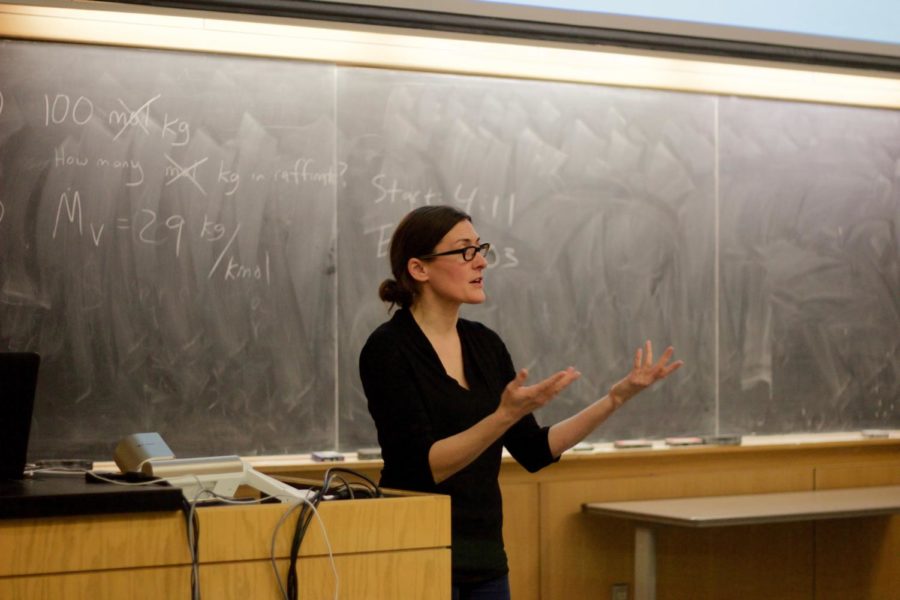Hybrid Careers in Design offer a new way to create
By Nic Wackerly, [email protected]
Siobhan Gregory discusses the opportunities that combining anthropology with industrial design can create at Coover Hall on Friday evening.
February 17, 2017
Industrial designers lead the way in initiating new technology, and in this age of increasing amounts of data, knowledge and powerful electronics, the designers are having success by taking a more human approach.
Hybrid design careers work on advanced design research to discover the newest needs and wants of society. Siobhan Gregory, senior lecturer in design and design research at Wayne State University in Detroit, is at the forefront of the movement.
She presented her lecture, “Hybrid Careers in Design: Industrial Design + Design Anthropology,” on Friday at Coover Hall. The lecture focused on the advancement of hybrid careers in design and how it can create new ways to find solutions.
Gregory’s hybrid career centers on combining industrial design and design anthropology. She used a quote from one of her former professors to explain how the two blend together.
“If design is the artificial world, the man-made world, then it is the perfect match for anthropology, which is about studying all aspects of the human world,” said Dori Tunstall, dean of the faculty of design at OCAD University.
In studying the aspects of the human world, one can find the opportunities where innovation can still happen. Anthropology helps designers find that space.
“What we want to do is find the new categories, the new markets,” Gregory said. “Where the new areas of opportunity are for industrial designers is where we don’t have answers yet.”
Gregory examines this topic with a wealth of experience. She started as an automotive designer for General Motors and later became the lead women’s footwear designer for the Keds Corporation, according to her biography from Wayne State University.
She now uses her experience and knowledge of anthropology and design to help educate designers at Wayne State University, as well as with local community projects in Detroit.
“What I mainly focus on [in teaching] is human-centered approaches to the design process,” Gregory said. “I try to get my students face-to-face with the end user.”
The face-to-face interactions help the students understand what is going on with what the end user wants, which can help with the design process and coming up with new ideas.
“It is having the foresight to identify that new space that I think is really where the industrial design profession can become extremely competitive and really grow in new ways,” Gregory said. “And I think that comes with deep observation and understanding of human experiences.”
The event was sponsored by the Department of Industrial Design with support from the Women’s and Diversity Grants Program.







